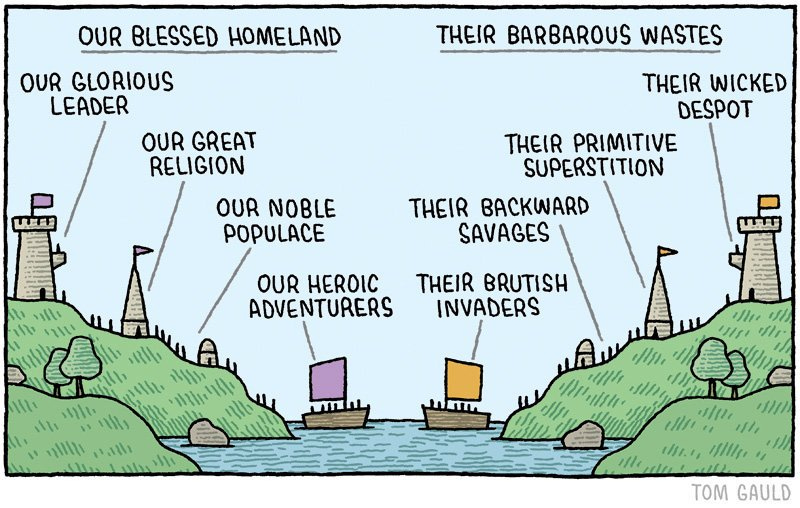One of the Best Tools for a Better World: Pt 1
What is "contact theory", and why is it my favorite for conflict reduction?
This article is not on original thoughts and theories of mine. It’s instead a chance to review and uplift one of the more promising ideas I found on how to reduce global conflict and prejudice, when I was doing research on conflict for our Art of Difficult Conversations course.
In the books I was reading - particularly High Conflict - the author proposed that one of the most effective tools for reducing global conflict is something called “Contact Theory” (also known as the “Intergroup Conflict Hypothesis”).
Simply - bringing groups of highly different people together, under certain conditions, and getting them to interact, could decrease prejudice and violence in the long term.
Let’s start at the beginning.
Up until the mid-1900s, it was generally assumed that intergroup contact would lead to more conflict, not less. One of the first studies done on contact between disparate groups seemed to affirm this: in 1936, the University of Alabama assessed the attitudes of white students towards black ones as they moved through their university term.
They found that racist ideology increased for the whites over their time in the school. Note that all the teachers at this school were white, and the black people were generally lower-status, conforming to the stereotypes the whites had been taught as children.
So: contact in itself perhaps wasn’t sufficient. What was?
In 1948 and 1957, relations between blacks and whites were studied again, on Merchant Marine ships and in the police force. In both situations, whites who had worked with black colleagues showed an decrease in derogatory racial attitudes, and more willingness to work with blacks ongoingly.
In 1949, the question of black/white intergroup contact was studied at scale for the first time. A set of researchers looked at the attitudes of white soldiers who had fought with black ones at the Battle for the Bulge in 1944-45, and found that the whites’ racist beliefs had markedly decreased since their friendly contact at that fight.
Thus: in some situations racism increased and in others, it decreased. How strange. Aha, fertile ground for a grant proposal! Enter…
Contact Theory, by Gordon Allport
At the point when Allport developed his theory - based on the work of past scientists such as R.M. Williams, S.A. Stouffer, and others - interest in racial prejudice was rising, most notably with the Brown vs Board of Education case in 1951 that started school de-segregation.
Allport’s primary interest was in studying personality traits. The nature of prejudice and inter-group conflict seems to have been somewhat of a sidecar for him, and I found differing reports of how he got into it - through his doctoral students’ papers, or through work with refugees during WWII? (I think the WWII work may have been Stouffer’s instead, mis-cited by Wikipedia. University webpages show a strange dearth of biographical information on Allport’s interest in prejudice. GPT tells me that it was the cultural milieu of the social scientists Allport was around at Harvard, with the background of WWII, that got him into contact theory. I’m mostly going off on this tangent to show you how weird fact-finding is in these days of the internet 😂)
Either way, he took a break from categorizing traits and internal forces to take a look at prejudice. As one does.
In his book The Nature of Prejudice, Allport looks at what defines an in-group; then, why prejudicial attitudes are hard to change at the individual level. Why, if a child attends a lesson on intercultural education, do they not get less prejudiced?
To cite Allport:
The chances are this lesson will be smothered by the more embracing norms of his family, gang, or neighborhood. To change the child's attitudes it would be necessary to alter the cultural equilibrium of these, to him, more important groups. It would be necessary for the family, the gang, or the neighborhood to sanction tolerance before he as an individual could practice it.
This line of thought has led to the dictum, "It is easier to change group attitudes than individual attitudes." Recent research lends some support to the view. In certain studies whole communities, whole housing projects, whole factories, or whole school systems have been made the target of change. By involving the leaders, the policies, the rank and file, new norms are created, and when this is accomplished, it is found that individual attitudes tend to conform to the new group norm.
So - following from that, the most effective tactical for changing views long-term would be group-level interventions, where those who share our in-group or reference group* have an opportunity to change their views.
*Allport distinguished these: in-group is the meta-group in which you and others would classify you; reference group is the specific tribe to which you feel belonging and consider yourself a member.
When group intervention isn’t possible, individual exposure to different peoples over time - again, under certain conditions, which I promise I will explain momentarily; I’m just building the dramatic tension - can still decrease prejudice.
Why? StoryCorps has a beautiful summary:
“We often first learn about people from different societal groups through stereotypes. The contact hypothesis posits that when we meet each other as individuals, people stop being stereotypes and become people again….
In our current political landscape, we tend to think the best way to protect our ingroup is to diminish if not obliterate our adversaries, to push them out or make them irrelevant. But the answer to “identity threat” doesn’t have to be taking out the other guys. It could be to reduce the threat [by helping] people understand, for instance, through direct connections with people from different groups, that…people from very different walks of life may not actually be all that threatening.”
(Side note: StoryCorps “One Small Step” program, the Human Library project, and everything by Braver Angels are some of my favorite forms of applying Contact Theory in the wild. I really want to host a Human Library event!)
Let me tell you one of my favorite contact stories.
Keep reading with a 7-day free trial
Subscribe to Sara’s Substack to keep reading this post and get 7 days of free access to the full post archives.





